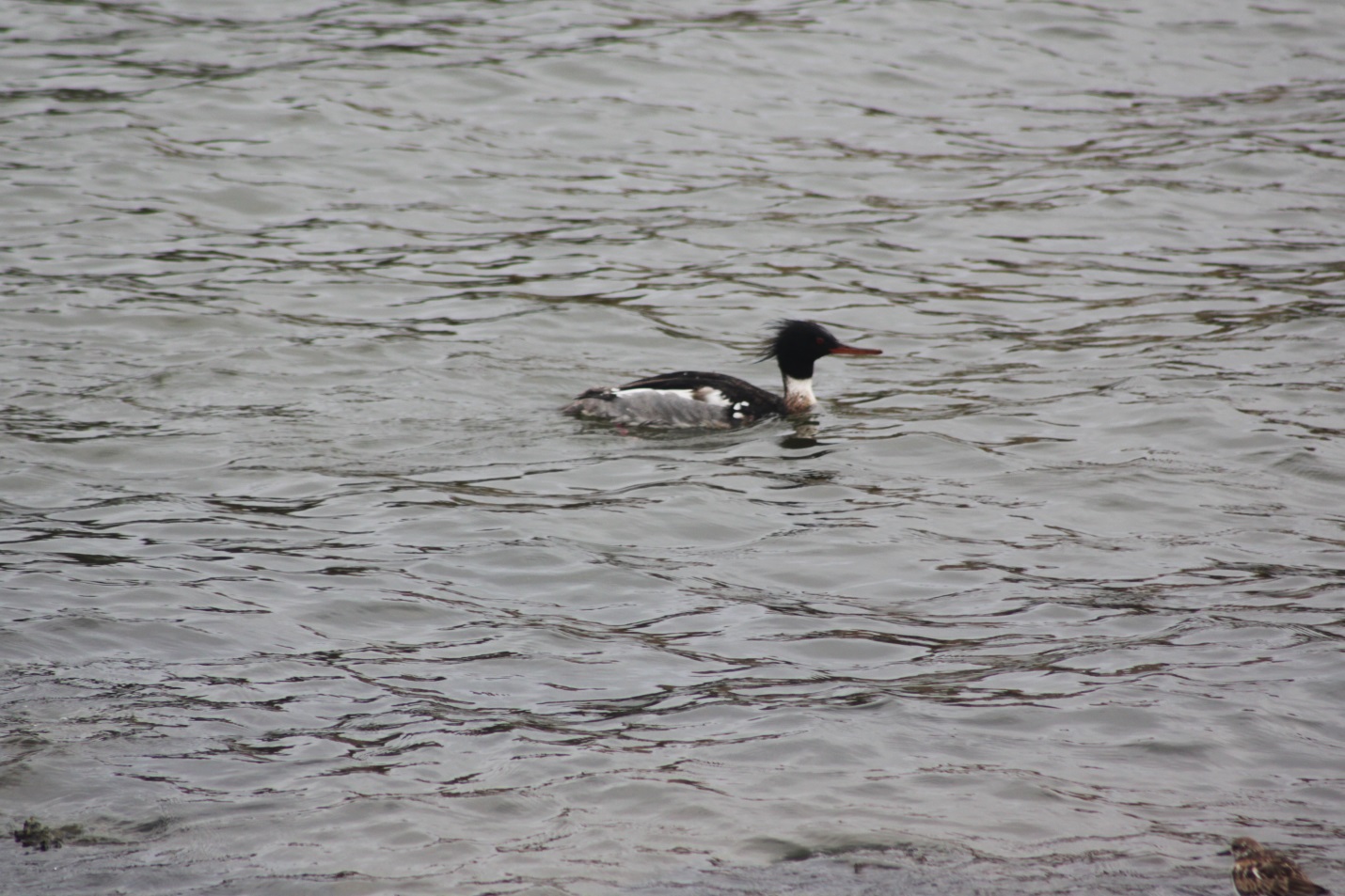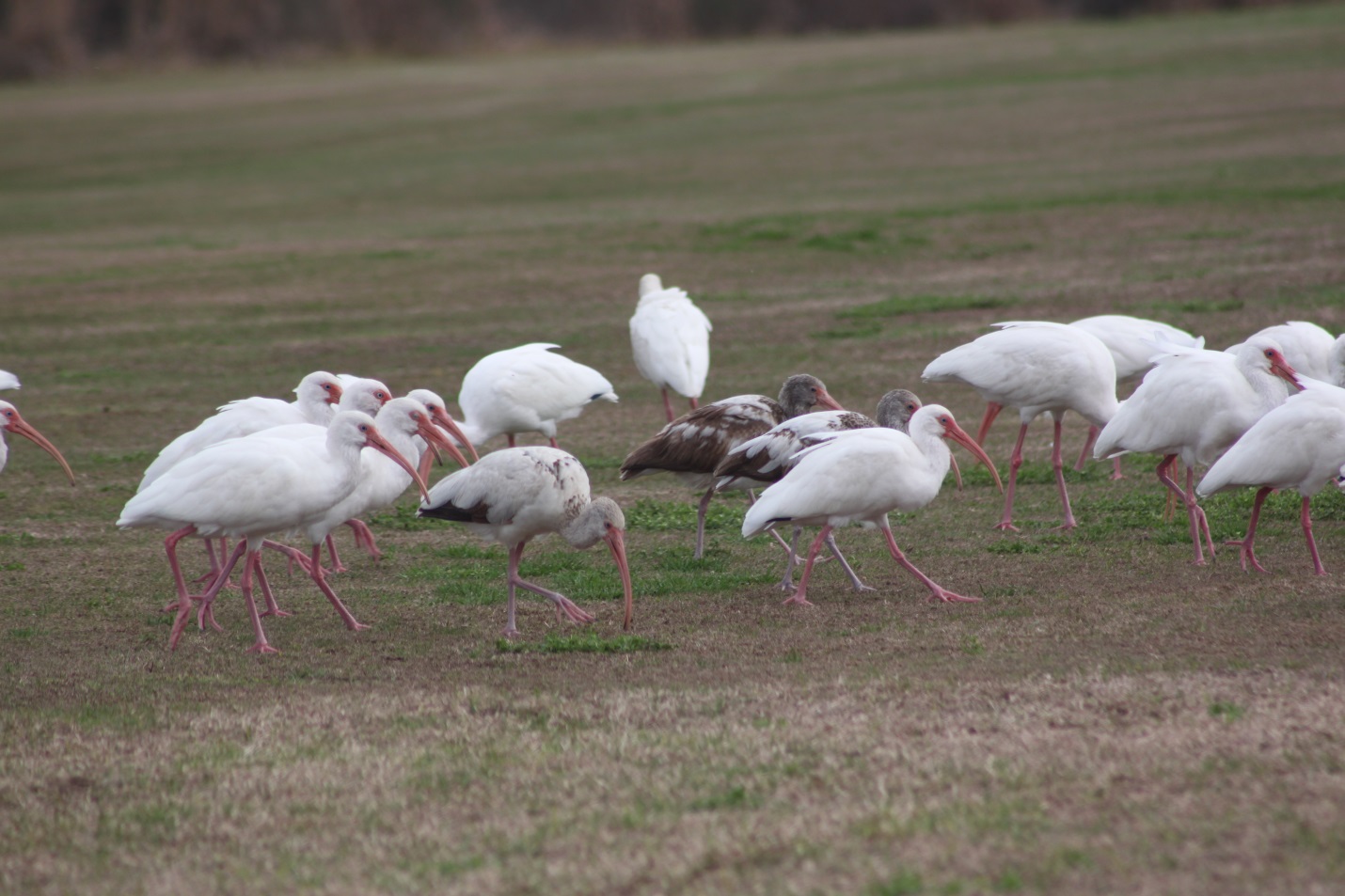Category: Uncategorized (Page 3 of 12)
After three decades of battling evil and exemplifying teamwork, the beloved Teenage Mutant Ninja Turtles (TMNT) have made their temporary home in an exhibit in the Moody Gardens’ Discovery Pyramid.
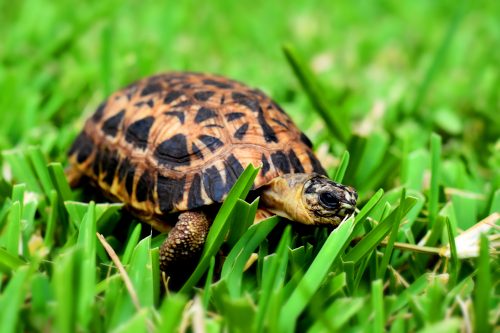
The exhibit features a live turtle aspect to shine a light on turtle wildlife conservation. The turtle species that will be featured in the exhibit will be the Spider Tortoise, Radiated Tortoise, Fly River Turtle, Burmese Mountain Tortoise and the Sea Turtle. This part of the exhibit will highlight ways to forge a future for these animals and bring awareness to factors that disrupt their natural habitats.
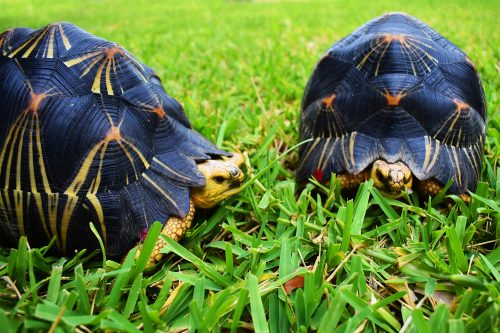 “The Teenage Mutant Ninja Turtles are all about using teamwork and building collaboration,” said Moody Gardens’ Education Curator Jennifer Lamm. “Saving turtles from extinction is no exception. We can all work together to save wild turtles.”
“The Teenage Mutant Ninja Turtles are all about using teamwork and building collaboration,” said Moody Gardens’ Education Curator Jennifer Lamm. “Saving turtles from extinction is no exception. We can all work together to save wild turtles.”
Just by visiting Moody Gardens you are doing your part to further the conservation of these species. As a member of the Association of Zoos and Aquariums (AZA), Moody Gardens works with conservation groups around the world to fund research on species and their habitats. The more we know about an animal’s life cycle and environment, the better we can protect them. When you visit an AZA member institution, you help fun research and conservation efforts for animals, including turtles, all over the world.
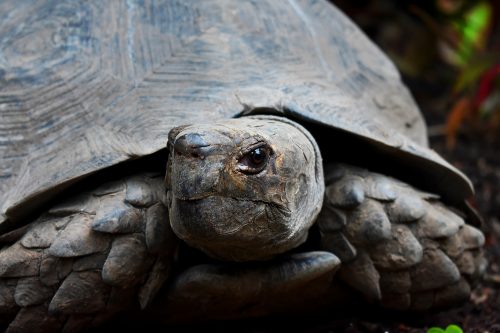
Want to do more? Here are some simple ways you can help!
- Reduce the amount of trash you create when you visit the beach by carrying reusable bottles, straws and bags.
- Join a beach cleanup crew.
- If you see a turtle on the beach make sure to call in the specialists at 1-866- Turtle-5.
- Stay clear of marked sea turtle nests on the beach.
- Conserve resources such as water, food or energy which gives the environment the time it needs to recycle.
Click here for more information about our new exhibit opening on September 29 within our Discovery Pyramid – Nickelodeon’s Teenage Mutant Ninja Turtles: Secrets of the Sewer
You have enjoyed trick-or-treating and the kid’s costume contest at Ghostly Gardens for years, and this year Moody Gardens has expanded the tradition to include two special activities to stir even the most unshakeable adults.
FOR THE ADULTS
The Night Terror Film Festival will run Oct. 20 and 27 and feature classic horror-movie titles. Each night features four classic horror-movie titles. The Film Fest is strictly for audiences 18 years of age and older. Tickets are $25 per person for the general public and members, per night and include admission to all four films, plus a popcorn and beverage. A special menu of ghoulish fare will be available for purchase to take guests to the bewitching hour. The Film Festival schedule is:
Oct. 20
5 p.m. – “Beetlejuice”
6:45 p.m. – “The Exorcist”
9 p.m. – “The Shining”
11:45 p.m. – “Nightmare on Elm Street”
Oct. 27
5 p.m. – “The Conjuring”
7:10 p.m. – “Annabelle”
9:05 p.m. – “The Conjuring 2”
11:35 p.m. – “Annabelle: Creation”
FOR THE ADULTS
The “Reignforest of Terror,” also on Oct. 27, takes guests on an after-hours theatrical tour through the Rainforest Pyramid that highlights the scary truths animals face in the wild. This event is also strictly for audiences 18 years of age and older. Tickets are sold on a first-come, first-serve basis by time slot for $25 per person and $15 for those with annual memberships. Tours start at 6 p.m. and are scheduled every half hour with the last tour starting at 8:30 p.m. wit participant check-in required 15 minutes prior to the tour. This year’s ticket sales support ocelot conservation.
FOR THE KIDS

It’s a family affair with activities for the kids on Oct. 28 with the annual Ghostly Gardens celebration. Children and their families can participate in free trick-or-treating throughout the Moody Gardens property, Creepy Crafts, face-painting and other fun activities from 2-4 p.m. The event will also include a kid’s costume contest for children 12 years of age and younger. Prizes will be awarded to the participant with the best costume in each of the different age groups. The costume contest will kick off at 3 p.m. in the Gardens Lobby of the Visitor’s Center.
All guests are encouraged to dress up in their favorite costume on Oct. 28. Families with at least on member in a Halloween costume will receive a special discount to the Rainforest Pyramid, SpongeBob SubPants, Discovery Museum, MG 3D Theater, 4D Special FX Theater and Colonel Paddlewheel Boat, paying just $5 per attraction per person.
For more information or to purchase tickets to the Night Terror Film Festival or The Reignforest of Terror, click here.

Historically the birding activity from about mid-May through early September is slow, hot, buggy and generally unrewarding. From a species diversity standpoint, this year’s activity follows the expected trend with only 6 new property species added since early May. With the Moody Gardens property total stuck on 185 and the golf course tally at 121, the past several weeks’ surveys have seemed pretty stagnant. On 12 July, I was able to add Whimbrel with one grazing through our northwest marsh area to end a 50 day stretch without a new species.
As I enter daily surveys into eBird and check off boxes on the excel spreadsheet, I have to remind myself that encountering 25-30 species a day on a 240 acre property is actually pretty special. Researching more exotic birding locations in preparation for trips to South Texas and Colorado recently emphasized how lucky we are here at Moody Gardens.
These summer observations have allowed me to focus more on what the species and individuals are doing in their day to day activities rather than simply looking to add to the overall species counts. Several species use various habitats here on our property to nest and raise their young. Late spring through early summer is the prime time for many of our resident species to bring up offspring. The large rookery of Yellow-crowned Night Herons and Green Herons in the oak trees around the Learning Place was very productive this year. At its peak there were at least 17 active YC Night Heron nests with between 2-3 chicks of varying ages being raised. The Green Herons seemed to stage their activity a little later than the YCNHs and I counted up to 11 of those active at one time. This morning’s survey only yielded one nest with 2 YCNH young that appear close to fledging. Several species nest in the retention ditch on the west side of the Aquarium. Although this location offers good cover and protection from predators, it is prone to flooding when we receive heavy summer rains. Despite the risks, there were at least 2 successful clutches of Black-necked Stilts and 3 successful Killdeer broods in that area this year.
Yesterday morning I was surprised to see a brood of newly hatched Black-bellied Whistling Ducks in the dense southern half of the ditch. I counted 12 little “bumblebee” ducklings following closely behind their wary parents. Having large clutches is an evolutionary strategy designed to account for losses from predation. These cute little fuzz balls have some challenges ahead avoiding all the other hungry herons, egrets, gulls and even turtles looking for a quick meal.
Even as we’re watching the tail end of breeding, we’re starting to see some of the early fall migrating species showing up again on their way south. Least, Semipalmated, Spotted and Solitary Sandpipers showed up on this week’s surveys. Yesterday there was a large flock of Orchard Orioles winging their way back across our Island for their winter “vacation”. It seems quite early for species to be moving back south, but it does add some excitement into the daily surveys. It also reminds me that creating a large data set like this year-long property survey will help answer bigger picture questions on climate change, and altered phenologies (plant and animal life cycles related to alterations in climatic patterns).
Keep your eyes to the skies in anticipation of increasing numbers of birds flying over, or to our tropical Island paradise.
-Greg Whittaker
The past 2 weeks have been a phenomenal celebration of spring migration. Since 10 April, the Moody Gardens property species count has risen from 139 to 173 with many of the new species coming in the form of colorful songbirds flitting amongst the trees and cryptically colored thrushes rummaging amongst the dark undergrowth. I’m finding now that I’m running out of new species to look for with the list of likely additions dwindling.
One species that I would not have anticipated adding on this year-long survey is the Yellow-headed Blackbird pictured above. Thanks to Megan Foshee in Education for noticing this brightly colored specimen and passing the info along quickly so I could hunt it down and get some great pictures. This is a western species that rarely makes an appearance out here on Galveston Island. Photographically capturing a handsome male specimen here on property is certainly a lucky event.
As it turns out, I saw a second rarity later this same afternoon. As I was driving out to look at the marsh habitat on the northwest edge of property I saw a Cuckoo flying off from the large pile of trees and branches being staged for grinding into landscape mulch. It was a comical affair as I jumped from my still-running car and tried to sneak up on this wary bird moving west. The cuckoo made its way down the northernmost row of trees in the experimental tree farm as I paralleled down the south edge of the plot, never getting close enough for a good photo. I was at least able to confirm it was a Yellow-billed Cuckoo for submission to eBird. It inspired a bit of poetry I’m calling CuckooHaiku:
Cuckoo, holy cow
Need pictures, must get ahead
Bright shirt, flip-flops, arghh!
This past week was the 17th annual Featherfest hosted by Galveston Island Nature Tourism Council (GINTC). This official “migration celebration” has grown from a simple local affair into one of the premier birding and photography festivals attracting 600+ participants from all over the United States and beyond. Through the 6 days of organized activities, there were over 240 species seen or heard, making this year one of the best on record. I had the great pleasure of hosting Greg Miller at my house again this year. If you’re familiar with the movie and book named “The Big Year”, Greg is one of the three primary characters (played by Jack Black in the film). I was able to bird with him a few times this year and thoroughly enjoyed soaking up all his helpful hints on bird identification and behavior. Casting Jack Black to play Greg was brilliant as he’s just one of the most genuine, positive people I’ve met. Greg told me that this past Sunday was the second best Texas warbler day he’d ever had, with the first being his “Big Year” day 20 years ago at High Island. That’s pretty great praise for Galveston Island’s habitat as we only visited 3 places on the Island, and Lafitte’s Cove Nature Preserve wasn’t even one of them. Greg will be back again next year to lead trips, so I’d advise anyone that’ interested in a fun field trip to sign up early.
The list of new species encountered since the 10 April blog includes: Blue-winged Teal, Least Bittern, Purple Gallinule, Semipalmated Plover, Upland Sandpiper, Baird’s Sandpiper, Yellow-billed Cuckoo, Eastern Wood Peewee, Great-crested Flycatcher, Blue-headed Vireo, Warbling Vireo, Philadelphia Vireo, American Crow, Veery, Gray-cheeked Thrush, Swainson’s Thrush, Gray Catbird, Brown Thrasher, Tennessee Warbler, Yellow Warbler, Chestnut-sided Warbler, Black-throated Green Warbler, Blackburnian Warbler, Yellow-throated Warbler, American Redstart, Swainson’s Warbler, Ovenbird, Northern Waterthrush, Yellow-breasted Chat, Scarlet Tanager, Rose-breasted Grosbeak, Baltimore Oriole, Dickcissel, and Yellow-headed Blackbird.
There are still a lot of spring migrants moving through our area and we’ll see a few new species coming through in the next 3-4 weeks. Please don’t hesitate to contact me directly if you have questions on where to go on property, or in the general Galveston area for birding.
Guests will learn more about their planet, and come away with a better understanding of what everyone can do to better protect it, at “One Earth, One Choice,” set for April 21 at Moody Gardens.
Guests can immerse themselves in the spectacular wonders of both the Rainforest and Aquarium Pyramids. Witness a breathtaking tribute to the wonders of Asia, Africa and the Americas as well as the Gulf of Mexico, South Atlantic, South Pacific, North Pacific and the Caribbean that showcases some of the issues that are having a negative impact on these environments.
Earth Day weekend kicks off April 20 in conjunction with Galveston’s Featherfest activities and an Audubon Society presentation in the MG 3D Theater and a showing of “The Lost Bird Project.” This film features artist Todd McGrain’s creation of bronze sculptures of five extinct bird species and his mission to install the pieces where the bids were last seen in the wild, including the Eskimo Kurlu last seen on 11 Mile Road in Galveston.
Start off Saturday with a free yoga class at 8 a.m. in the Butterfly Garden. Need something for the kids to do while you are getting your exercise in? “The Lorax” will be showing starting at 8 a.m. in the 4D Special FX Theater. “Amazon Adventure 3D” will also be showing at various times throughout the day in the MG 3D Theater.
For those who are interested in taking action with earth-conscious efforts, Moody Gardens invites you to join staff and volunteers at 9:30 a.m. for a wetlands cleanup along Offats Bayou. The group will depart from the Tram Stop located in the West Parking Lot.
Earth Day events are planned for 10 a.m.-3 p.m. across the Moody Gardens property. The Moody Gardens “ZOOpermart” will be open inside the Rainforest Pyramid allowing guests to learn about palm oil and how environmentally friendly their food is. Craft tables will also be set up in the Visitor’s Center Lobby where guests can make Toad Abodes out of flower pots. Check out the Earth Day Expo in the Garden Lobby and discover more about gardens, Master Naturalists, Master Gardeners, diving and the Turtle Island Restoration Network.
Visit the Macadamia Room at 11 a.m. and 1 p.m. to see a presentation from the Moody Gardens’ Education Department about the different plants and animals of the Rainforest and how human interaction affects those species.
Feast on sustainably-sourced options in The Garden Restaurant. Choose from grilled Keta Salmon over white wine cream sauce pasta and vegetables with garlic bread or Salmon tacos with Citrus Slaw on corn tortillas served with rice pilaf and salsa verde.
Moody Gardens’ biologists will host Keeper Chats throughout the day highlighting a variety of animals including birds, komodo dragons and more. Staff will lead discussions on important environmental issues as visitors can learn how to better protect the planet for the future. Milkweed will also be given away to guests throughout the day while supplies last.
“Education and conservation are vitally important aspects of our mission here at Moody Gardens. These events bring awareness to what we can do to make this a better planet, not only for us, but for the animals and plants we share it with,” Moody Gardens President and CEO John Zendt said.
Moody Gardens will offer an Earth Day Special Value Pass for $59.95 for adults and $49.95 for seniors and children ages 4-12 on April 21. This pass will be available for purchase both online and at the ticket counter for admission to all Moody Gardens attractions. For a complete event schedule, click here.
Although it seems Mother Nature isn’t fully committed to allow the spring breeze to bathe us with balmy Gulf air, this week has started to show significant changes in the birds on the Island. It seems most of the waterfowl and raptors have left the Island and I haven’t seen a single Sandhill Crane since March 1st. The shorebirds and wading birds are migrating through in larger numbers and early purple martins and swallow species are showing up. Several species are already showing off flashy breeding plumage, exhibiting courtship behaviors or even nesting. White-winged Doves (pictured above), Mourning Doves and Eurasian Collared Doves started showing up in higher numbers and on a consistent daily basis in my property surveys since about mid-February. Their abundance and activity has been very noticeable over the past week with increased courtship behavior across all 3 species.
Most bird species go through a profound plumage change as their hormones surge with the inceasing daylight hours in the spring. They transition from the more drab coloration known as basic plumage to the more colorful alternate (or breeding) plumage. In addition to more brilliant pigmentation within the feathers, many birds will develop brighter colors on their exposed skin like their legs and feet and the skin around the base of their bill and around their eye. The WW Dove pictured shows bright blue skin around the eyes and at the base of the bill and more brightly contrasting black, white, gray and brown feather coloration than during winter.
Since most birds see color differently than humans and their visual acuity drifts further into the ultraviolet spectrum, much of the alternate plumage may appear more iridescent or reflective to us rather than having eye catching visual color. This makes sense from an evolutionary perspective. To other birds they appear eye popping, but to most of the rest of the animal kingdom that might find them tasty, they may still have a natural camouflage appearance.
Be mindful of our early nesting species as you continue to hack down all those cold-killed landscapes around your home.
The Moody Gardens property surveys continue twice daily as my schedule allows and through 9 March I have tallied 96 species for our main property with an additional 10 species at the Golf Course. Since the last blog post I’ve seen Black-bellied Whistling Duck, Turkey Vulture, Dunlin, Western Sandpiper, Lesser Yellowlegs, Least Tern, Black Tern, Barn Swallow, and Sedge Wren here on our main property and added Ring-necked Duck, Greater Scaup and Bronzed Cowbird at the Golf Course.
The birding trip this past Saturday morning (24 February) was a welcome break from the foggy, drizzly, cold, windy weather we’ve experienced through February. After the two brutal cold snaps that severely challenged our tropical landscape, Islanders have been hacking down dead foliage, clearing beds and beginning the process of replanting. As each of you reimagines your personal surroundings, I’d encourage you to consider thinking of resident and migratory birds in your master planning process. Houston Audubon Society offers great suggestions in their Creating Bird Friendly Communities section of their website. Planting native species of grasses, plants, shrubs and trees creates habitat and supports the naturally occurring food webs that benefit wildlife. Adding a clean water source like a bird bath, fountain or drip adds serenity to your environment and benefits wildlife. Reducing risks such as reflective window situations, bright artificial lighting at night and pets that act as predators when birds are at their most vulnerable after making the 500 mile flight across the Gulf of Mexico can save countless migratory bird lives. Where birds thrive, people thrive.
We’re seeing some of our winter visitors winging off to the north to start their courtship, breeding and nesting activities and they’ll be replaced by spring migrants that have been spending the winter farther south. Waterfowl species like the Red-breasted Merganser pictured above are leaving our coastline in large flocks. This lone male was patrolling the Lake Madeline channel on the east side of the Learning Place this morning. Just last week I counted more than 75 of them in a flock in Offatts Bayou beginning to raft up prior to flying off to Northern Canada or Alaska to start their 2018 families. Over the next few weeks we’ll see most of our winter waterfowl, raptors and sparrows disappear with shorebirds, swallows and early songbird migrants flying up the coastline from the west to replace them. Many of the species we’ll see between now and mid-May will continue past Galveston to points farther north and east as their summer homes.
The buzz of spring migration is building. Every day I drive or walk the property I’m on the lookout for new species to check off a list or photograph. Many of those that will be flying through may only stay for a day or two, so I’m keeping my eyes to the skies so I don’t miss any. Through late February I’ve logged 87 species of birds either using Moody Gardens’ habitats, or flying over. There were another 7 unique species that were seen while surveying the Golf Course for a total of 94 species to include in the Birds of Moody Gardens project. The new species encountered in February include Pacific Loon, White-tailed Kite, Bonaparte’s Gull, Horned Lark, Purple Martin, Tree Swallow, Cedar Waxwing, Seaside Sparrow and Vesper Sparrow.
I also discovered and joined the world of eBird. It’s an online resource that Cornell Ornithology Lab established to help collect a huge amount of bird population data by providing an easy to use bird checklist app for phones and computers. Moody Gardens is listed as a hotspot, so the species accounts that are entered are viewable by anyone that uses eBird. Get out and enjoy spring’s arrival and look out for birds literally and figuratively as you improve your post-winter backyard habitat.
Indeed, there has been so much to love at Moody Gardens during the month of February. A King penguin chick hatched earlier this month and is being well cared for by its single mother.
“This was certainly an exciting way to kick off the month of love,” said Assistant Curator Diane Olsen. “We completed the renovation of our Aquarium Pyramid last year, including tweaking the exhibit to provide the best environment possible for the birds’ breeding success and this just shows that all that dedication has paid off.”
King penguin mating season usually begins with a series of courtship rituals including different calling and “parading.” King penguin males work to impress females by standing tall and showing off their physique. Females choose the male they like and they will call and parade with each other before mating. King penguins incubate their eggs on their feet, so no nest is needed.
Typically once an egg is laid both the male and female will stay with the egg and take turns incubating it; however this was not the case with this particular chick and penguin mom Simone. This three-year-old penguin is a first-time mother who came to Moody Gardens a year ago from Sea World San Antonio and nurtured the egg by herself until it hatched. The mother continues to rear the chick on her own, leaving all to wonder who and where the father is.
“Simone is doing a great job caring for this chick. While we are keeping a watchful eye on it and her, I have full confidence that she will continue care of her chick,” Olsen said. King penguin eggs usually take about 54 days to hatch and the chick will become full grown after about 10 months.
Soon after this chick hatched, Moody Gardens held a naming contest with names selected by the Moody Gardens Penguin Biologists. The name selected for this new addition was “Astro,” in honor of our World Series Champion Houston Astros.
Stay tuned as we continue to monitor and post updates about Astro’s life in the South Atlantic Penguin Exhibit at Moody Gardens.
When I mentioned the property census project at a Nature Tourism Partnership meeting late in January, the suggestion was made to include the Golf Course. It seemed like a no-brainer, but I had simply not considered adding this piece of relatively adjacent landscape to the surveys. The golf course is only about ¾ mile away from the western side of the main Moody Gardens property with open airport space between and a marsh and woody scrub fringe connecting the north end of both areas. I took a few hours on the afternoon of 31 January and rode around in a golf cart surveying the course and some of the natural surroundings. I followed this initial survey up with a second trip on 9 February.
The golf course includes about 170 acres of open, manicured grass landscape mixed with some low dividing shrub tree lines and several freshwater pond habitats. There is also a 25 acre wild scrub field bordering the north margin that connects with Offatts Bayou as well as the large open expanse of the airport property. A large extension of tidally influenced brackish water known as Sydnor Bayou runs up the center of the course. A fairly dense scrubby tree grove located at the very southeast end of the course bordered by the corner of the airport property and Stewart road offers a neat pocket of wilderness that has proven rich in bird species through these two surveys.
The combination of open grass areas with freshwater ponds are habitats that we don’t see on the main Moody Gardens complex. These areas offer the opportunity to see many waterfowl species as well as the open ground foraging species like the White Ibis pictured above. This large flock included at least 3 juvenile birds that showed a nice progression of feather change from their first year brown plumage through the second year white plumage. Their long curved bills are perfect for probing down into the ground looking for tasty invertebrates. A couple similar species; Long-billed Curlew and Marbled Godwits are also likely to be seen using these open grassy fields as their forage grounds. The large, iconic Sandhill Cranes also forage across the open grassy habitats much to the dismay of the golf course groundskeeping crew as their methods are much more destructive than the smaller probing bills.
The waterfowl diversity through the winter months is a great draw for anyone interested in these other “birdies” on the course. Through the two surveys thus far I’ve logged 9 species of waterfowl with 4 new species in the totals. Through the 2 trips I counted 49 species with 10 that have not been seen in the main property surveys.
The species seen at the golf course through mid-February are listed below with the novel species in bold:
Gadwall, Mallard, Mottled Duck, Blue-winged Teal, Green-winged Teal, Northern Shoveler, Lesser Scaup, Red-breasted Merganser, Ruddy Duck, Pied-billed Grebe, American White Pelican, Brown Pelican, Neotropic Cormorant, Double-crested Cormorant, Great Blue Heron, Great Egret, Snowy Egret, White Ibis, Roseate Spoonbill, Osprey, White-tailed Kite, Sharp-shinned Hawk, Red-shouldered Hawk, Crested Caracara, American Kestrel, Common Moorhen, American Coot, Sandhill Crane, Killdeer, Spotted Sandpiper, Willet, Long-billed Curlew, Laughing Gull, Ring-billed Gull, Rock Pigeon, White-winged Dove, Belted Kingfisher, Eastern Wood Peewee, Loggerhead Shrike, Carolina Wren, Ruby-crowned Kinglet, Northern Mockingbird, European Starling, Yellow-rumped Warbler, Savannah Sparrow, Red-winged Blackbird, Eastern Meadowlark, Great-tailed Grackle, and Brown-headed Cowbird.



